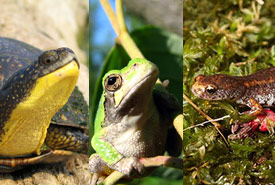World Wildlife Day Round 3: Vote for your favourite reptile or amphibian species

World Wildlife Day: vote for Blanding's turtle (photo by Ryan M. Bolton), gray treefrog (photo by Ryan M. Bolton) or four-toed salamander (photo by Brian Gratwicke)

World Wildlife Day: vote for Blanding's turtle (photo by Ryan M. Bolton), gray treefrog (photo by Ryan M. Bolton) or four-toed salamander (photo by Brian Gratwicke)